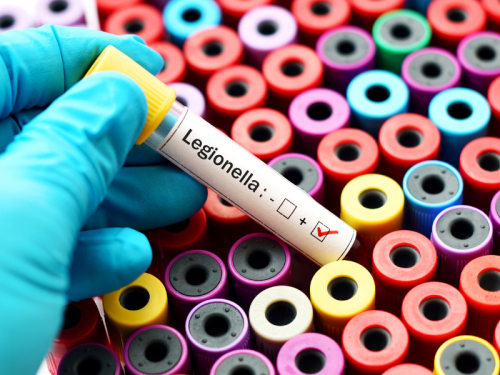Tulane researcher is part of $2.1 million EPA grant to study safer drinking water

Tiong Aw is no stranger to the subject of safe drinking water.
An associate professor in the Department of Environmental Health Sciences at Tulane University School of Public Health and Tropical Medicine, Aw has spent his entire career working in water testing and research. Just two years ago, he netted a $1.24 million Environmental Protection Agency (EPA) grant to study turning wastewater into drinking water.
Now Aw is part of a team including Michigan State University, the Ohio State University, Clemson University, the College of New Jersey and Drexel University as part of a $2.1 million EPA National Priorities Grant to study existing water distribution systems across the U.S.
That funding will allow Aw to collaborate with the multidisciplinary team across multiple universities to study the co-occurrence of opportunistic pathogens and disinfection by-product in drinking water systems across the country. The group hopes to better understand and predict water quality and health risks as a result.
“Although the U.S has one of the safest drinking water supplies in the world, the water we use daily can be safer,” Aw said. “According to the CDC, about 7.2 million Americans get sick every year from diseases spread through water. Opportunistic pathogen and disinfection by-product (DBP) contaminants in drinking water distribution systems remains a water quality issue that is prevalent across the country.”
Aw has published several studies on drinking water quality in school, residential, and office buildings. This new grant allows Aw to extend this research to community-wide systems.
He will coordinate field sampling at the local level in Orleans Parish and will assess the occurrence and concentration of opportunistic pathogens, while collaborating on ways to reduce risk from pathogens.
Opportunistic pathogens are microbes that typically cause disease in older adults and people with underlying health conditions and can present a serious human health risk resulting in debilitating or even fatal outcomes. These organisms include Legionella, Pseudomonas aeruginosa, and nontuberculous mycobacteria (NTM) as well as the brain-eating amoeba Naegleria fowleri. Of these, Legionella is of increasing concern.
Health departments reported almost 10,000 cases of legionellosis to the CDC in 2018, a nearly 10-fold increase since 2000. This number is believed to be higher today, and it is now the most commonly reported cause of drinking-water-borne outbreaks in the U.S.
Adding disinfectants like chlorine to drinking water to control disease-causing microbes is one potential step to protect the public’s health. However, the disinfectants needed to control these pathogens can also cause problems of their own by reacting with natural organic matter, bromide, and other contaminants to form disinfection by-product (DBP). Humans exposed to unusually large amounts of some DBPs could experience liver damage and decreased nervous system activity, and chronic exposure may increase risk of cancer.
Finding a delicate balance between letting opportunistic pathogens run rampant and inadvertently creating DBPs is the goal.
“Simply increasing disinfectant concentrations may cause unintended consequences,” says Aw. “To manage health risks associated with waterborne pathogens, disinfection must be optimized to inhibit pathogen proliferation while minimizing the occurrence and concentrations of disinfection byproducts and associated risks.”
The scope of the project is impressive, though Aw understands the importance of clear, concise language in conveying its results.
“We will actively collaborate and engage with water utilities and public health agencies to effectively communicate risk and translate scientific results into materials easily understandable by multidisciplinary scientific and non-scientific audiences,” he advises.
